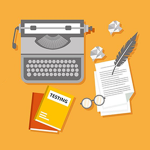I led the Editor’s Note in our very first mobile issue with “Everything is mobile”, but it is now way beyond what we thought. Mobile has come to mean only the smart phone, mobility is the word that describes everything a smart phone enables you to do.
Mobility is more than a device! Mobility is business infrastructure that allows accessing data and services from a host of devices. It’s using a smart phone as the remote control for the Internet of Things (IoT). It is context awareness of your device based on location or time, or just about any other data point. Mobility is Google Glass, Apple Watch, remote control for your nanny cam or home security system. Mobility opens up testing projects to enterprise data, apps, analytics, and cloud services.
The most exciting part of mobility for testing is the amazing array of products and services we have to test. Mobile testing now means testing controllers for the IoT. It means testing headsets with tiny screens and gestures for input. It’s testing data and security, not just for a device but of an entire connected, mobile system.
The awareness, strategy, knowledge and skills needed for this greatly expanded understanding of mobile is huge. Testing context aware access and information based on sensor information from geolocation and time is a whole new level above a mobile-enabled website.
Mobile platforms have exploded—in a precarious way for test teams. Compatibility, integration and security testing are different animals today. The use of smart phones as the remote controls for so many products and services has elevated them to personal command centers. Sensors and the explosion of the IoT has created large areas for learning and tool use with emulators/simulators, and communication protocols. The testing ramifications are interesting and the business demand for rapid development adds pressure, more intense need for great communication and risk analysis.
In this issue we cover a broad swath of today’s mobile testing environment, from the mobile portion of the IOT, to what types of issues to be aware of, how and what to test, and mobile test automation. My hope is this issue of LogiGear Magazine will help you with your mobile testing.
Our next issue will include getting help for your test effort; testing professional services, outsourcing, and offshoring, and we’ll also announce 2015’s editorial calendar.



















